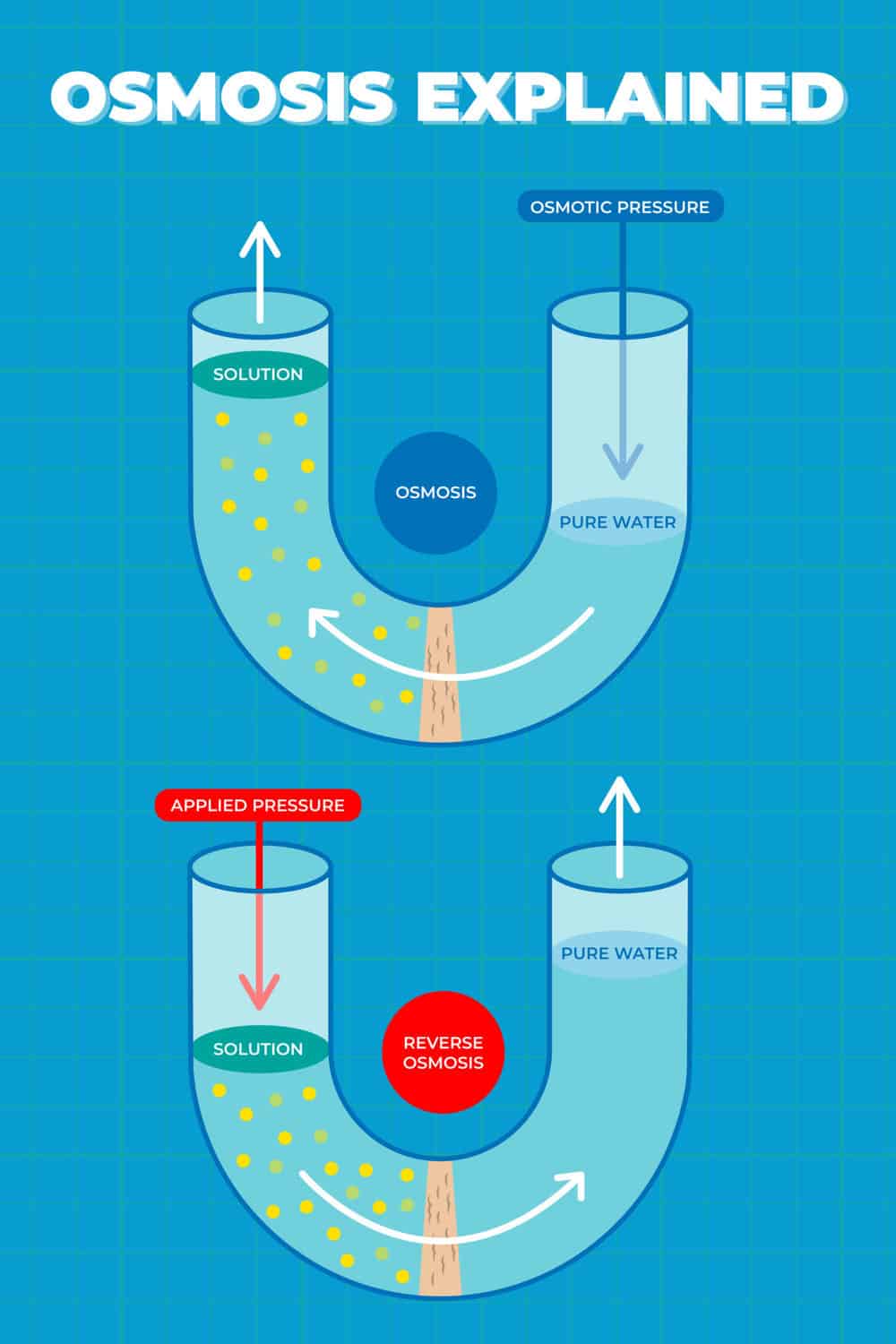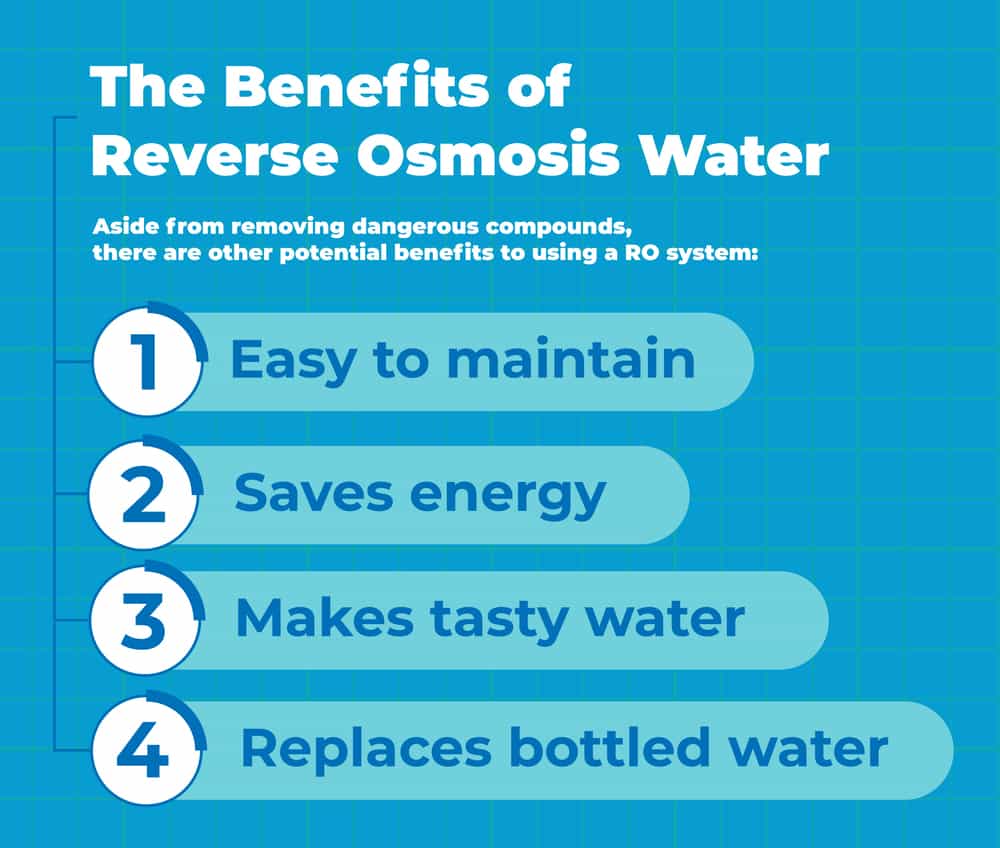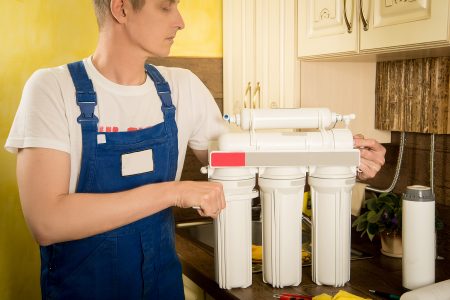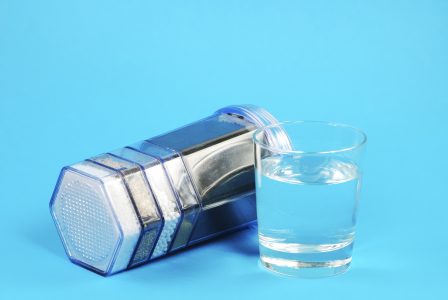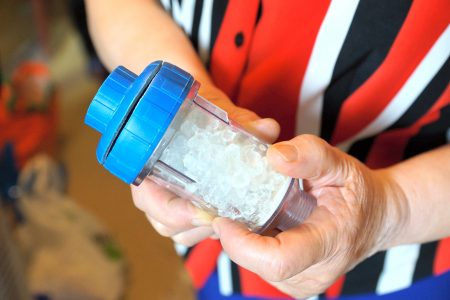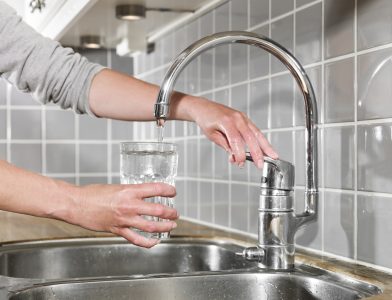Reverse osmosis is one of the most popular filtration methods today, used in both commercial and residential settings. With RO systems so widespread, you might be curious about what the process entails.
These filters have several stages that remove harmful compounds, leaving you with water containing far fewer contaminants. This can make a significant difference if you are concerned about harmful material in your water supply.
In this article, we will take a closer look at reverse osmosis water and whether or not it is safe to drink. We will also explore whether or not you need a reverse osmosis system or can get by with your existing plumbing system.
Key Takeaways
- Reverse osmosis (RO) removes contaminants from water, making it safer to drink and improving taste.
- RO systems can lose some beneficial minerals during filtration, so ensure a balanced diet to compensate.
- Lowered pH levels in RO water are usually not a concern, as the body can handle slight acidity changes.
- Overall, the benefits of using a reverse osmosis system outweigh the drawbacks, providing safe and fresh-tasting water.
What Is Reverse Osmosis Water?
You might be unpleasantly surprised by how many contaminants are in the water supply of the average American home. Chlorine and arsenic are two common contaminants, and reverse osmosis is one of the most effective ways to treat this water (1).
The process of reverse osmosis was invented in the 18th century by Jean Antoine Nollet, a French physicist (2). It was adopted by the US Navy on submarines to make seawater drinkable.
Today, it is one of the most important steps in advanced water filtration systems. Pressure forces the water through a semipermeable membrane.
When this occurs, any dissolved material, such as salt, is stopped by the filter and left behind. This also removes any larger particles.
The resulting water should be free from fluoride, pesticides, aluminum, and sulfates. Heavy metals and radioactive material are also filtered by reverse osmosis (3). These impurities are then flushed out via a drain.
A high-quality reverse osmosis filter greatly reduces the number of toxins in your water, making it safer to drink (4).
As reverse osmosis systems use a series of filters, these filters will gradually become clogged and need replacing. The manufacturer will provide an estimated lifespan for the filters, letting you install new ones when required. In most cases, this will be about every six months.
How Does RO Water Differ From Distilled Water?
Distillation and reverse osmosis can both be used for water purification, but their processes are very different. Reverse osmosis removes contaminants by sending the water through a filter. In contrast, distillation evaporates the water, leaving the contaminants behind.
Distilled water systems are more expensive to maintain and can’t filter out compounds such as chlorine. If your water supply is highly contaminated, reverse osmosis will clean it more effectively.
Is Reverse Osmosis Water Safe to Drink?
Like anything you are expected to eat or drink, it is natural to have doubts about how healthy it is to drink reverse osmosis water. As RO systems effectively remove contaminants, there are two other issues to consider:
- The loss of minerals during the filtration process
- The pH level of reverse osmosis water
Lost Minerals
Ironically, the main positive of reverse osmosis is also its major drawback. The filtration process is so effective that it often removes beneficial minerals alongside contaminants. This means your water is less harmful but it also provides less of a health boost.
Side effects could include (5):
- A negative impact on the body’s metabolism and general function
- Low levels of magnesium and calcium
- Possible increase of metal content (depending on the filter)
- Reduced intake of essential minerals
With a healthy diet, you should receive these missing minerals from elsewhere. Tap water generally has a relatively low mineral content even before being filtered.
All in all, you probably shouldn’t worry about reverse osmosis water having a low mineral content. Still, if you drink RO water exclusively, make sure you are getting important minerals from other sources.
The most important minerals for your health include (6):
- Magnesium: For cardiovascular and bone health
- Copper: Aids iron absorption and antioxidant functions
- Calcium: Essential for bone health
- Selenium: Essential for immune system function
- Fluoride: For dental health
- Sodium: Maintains muscle and nerve function
Keep In Mind
pH Levels
Another common belief about reverse osmosis water is that its pH level is too low. A standard water supply has a neutral pH of seven. When impurities are removed, the pH can be lowered, making the water slightly acidic. Acidity can cause stomach problems such as acid reflux syndrome.
However, this drop is widely believed to be too small to make a difference. It is also possible that the pH will return to normal when it reaches your stomach. Our bodies already work to balance their pH levels, so this concern might be overblown (8).
If you are worried about the pH level, you can use a pH testing kit to monitor it. If the pH is lower than the recommended range of 6.5 to 8.5, make sure you don’t have a mineral deficiency (9).
The Verdict
Based on our research, there is no reason to believe that reverse osmosis water is unsafe to drink. You might have to compromise by losing some minerals but you will also remove potentially very harmful materials.
The benefits of reverse osmosis far outweigh the relatively insignificant drawbacks. As long as you maintain a balanced diet containing essential vitamins and minerals, and keep an eye on the pH of your reverse osmosis water, you are very unlikely to encounter any problems.
The Benefits of Reverse Osmosis Water
In addition to removing contaminants, there are other potential benefits to using a reverse osmosis system:
- Low maintenance: RO filter systems are often compact and can be installed in various places, including under kitchen sinks. Aside from occasionally replacing the filter, there is very little you need to do. Depending on the manufacturer, you will usually need to replace filters about every six months.
- Improves water taste: By removing contaminants, reverse osmosis water is very pure and will taste excellent. This is especially true if you have been living with low-quality water for a while.
- Replaces bottled water: With a reverse osmosis system, you won’t need to buy bottled water, potentially saving a lot of money and greatly reducing your plastic waste.
- Low energy use: Reverse osmosis systems are very efficient, reducing energy waste in the long run. Water is filtered almost instantly.
FAQs
Reverse Osmosis Summary
Reverse osmosis is not necessarily harmful and can remove numerous contaminants from your water. You should consider it safe for drinking, cooking, showering, and more.
You will lose some minerals during the filtration process, which can be a negative if you don’t get them from other sources. Lowered pH levels are another concern, but this is unlikely to be anything your body is unable to handle.
Overall, the day-to-day benefits of using a reverse osmosis system far outweigh the slight drawbacks. You will have safe, fresh-tasting water without having to buy it in bottles, which can otherwise add up in terms of cost and waste.

